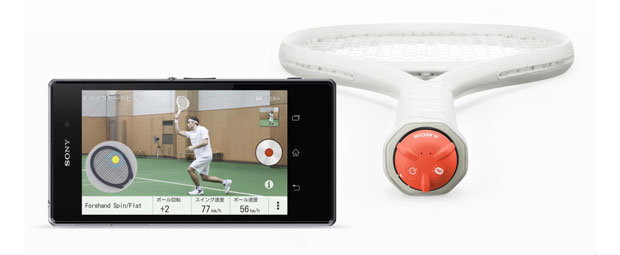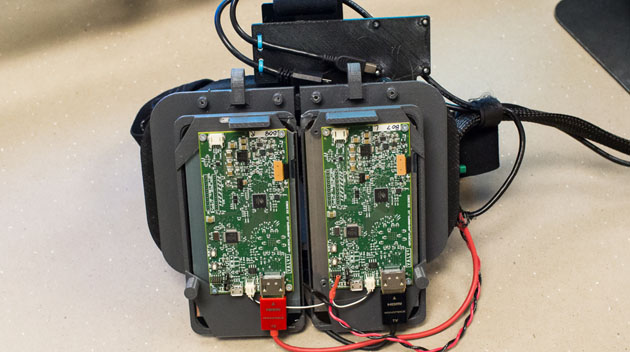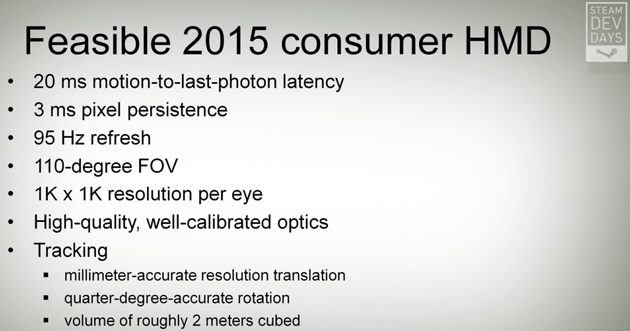
Sony has just announced at CES 2014 the Xperia Z1S and Xperia Z1 Compact, both based on the company's flagship smartphone. Now it seems that a new model, currently called the Sony D6503, is on the way and also bears some resemblance to the Xperia Z1, with a few minor alterations.
The Sony Xperia Z1 represents the electronics manufacturer's current highest standards for a smartphone, not only in terms of hardware and software but also in design. And it seems to work quite well for consumers so it is no wonder that Sony would want to play around with that a little bit longer. The Xperia Z1S is practically the same Xperia Z1, with a new name and marketed exclusively to T-Mobile subscribers in the US. The Xperia Z1 Compact, on the other hand, is pretty much a miniature Xperia Z1.
Much of this rumored Sony D6503 is still a mystery but, based on this set of leaked photos, it seems to continue the tradition of using the Xperia Z1 design. You even have the dedicated camera shutter button that Sony has revived in its flagship. There are, however, a few key differences, particularly on the location of some of the slots on the sides.
On the left side of the device are the SIM card slot and USB port. Both openings are covered by a single magnetic flap. On the right side one will have access to the microSD card slot, also covered by a magnetic flap. In contrast, the Xperia Z1's SIM card is located on the right side alone, while the left side houses the USB port and the microSD card slot, each possessing its own flap cover. Whether this new arrangement makes sense remains to be seen.
Another key difference is that the Sony D6503 is said to have a larger 5.2-inch display, but the pixel resolution is still unknown at this time. It is also believed to have the same 20.7 megapixel rear camera also found on the Xperia Z1. The Sony D6503 is expected to also be thinner than the 8.5 mm of the Xperia Z1, though we'll have to wait for an actual device to verify that claim.




Sony's theme for its CES press event was "Play" and part of the fun was a smart tennis sensor that adds vibrational and gyro detection to your racket, linking up with your smartphone through Bluetooth to offer up improvement suggestions and surprisingly deep information on your racket game. While we got in a few serves and forehands right after the event, the announcement, like its incomingCore life-logging / wearable sensor, was a broad one. A spokesperson told us back in Vegas that Sony hadn't yet decided on a concrete name, let alone a price or release date. Well, Sony had plenty of answers at today's press event, announcing at a tennis club near its Shinagawa HQ that the sensor would launch (at least, in Japan) this May, priced at 18,000 yen ($175).
We'll admit, we had some suspicions that Sony's Smart Tennis Sensor might never arrive in the real world (the demonstration area wasn't that far away from a row of conceptual smart glasses), but it seems that Sony's taking this new possible market pretty seriously. The sensor will launch compatible with around six Yonex EZone and VCore tennis rackets, with more models promised after launch. At the moment, you'll need a dedicated sensor for each player: if your buddy uses your racket, their data will be folded into yours, but the team added that this is something that they'll be working on in the future.
Sony has also readied a companion app on both iOS and Android to launch alongside the sensor hardware when it arrives in late May. The app, alongside displaying stats and heat maps of where the ball hits the racket, will also be able to record a video of your earth-shattering serve and replay it alongside the metrics captured by the sensor. Maybe that ace wasn't quite so earth-shattering. We've added Engadget editor Michael Gorman's attempts right after the break.
Welcome to IRL, an ongoing feature where we talk about the gadgets, apps and toys we're using in real life and take a second look at products that already got the formal review treatment.

By now, we've written nearly everything there is to say about the iPad Air, but that doesn't mean we can't revisit it here in "IRL." In particular, our own Jon Fingas bought one to see if it was lighter and faster than his third-gen model. Surprise: it is.
 I like big-screen tablets, but I'm not a fan of the bulk that comes with them -- a 1.5-pound slab isn't especially comfortable to hold during an hour-long reading session. That's why I leaped on the iPad Air when it launched this fall. In theory, it's a large tablet that's as nice to hold as more compact devices, including the iPad mini. But does it really defy the laws of physics?
I like big-screen tablets, but I'm not a fan of the bulk that comes with them -- a 1.5-pound slab isn't especially comfortable to hold during an hour-long reading session. That's why I leaped on the iPad Air when it launched this fall. In theory, it's a large tablet that's as nice to hold as more compact devices, including the iPad mini. But does it really defy the laws of physics?
Almost. The Air isn't quite weightless, but it's still wonderfully compact and light. I have no problems holding the tablet while I'm reading a couple of book chapters or playing an involving game. I can even thumb type with it, which wasn't realistically possible with previous full-size iPads. It's hard to imagine going back to any heavier slate after this; I'd rather carry an Ultrabook instead, since the added weight at least comes with more functionality.
The Air is also one of the quickest mobile OS tablets I've used. Web browsing is about as fast as you'd expect from a desktop, and most current apps don't seem to faze it. I just wish developers would make better use of the A7 chip; right now, the best showcases for its processing power are media editing tools and intensive games like Infinity Blade III. iOS 7 runs smoothly and is certainly easy to use, although I've very occasionally seen the iPad crash without warning. It's clear the software is still rough around the edges.
If there's any major concern, it's simply that the iPad Air won't sway those who want a more PC-like experience. If you want to view more than one app at a time, you'll have to get a suitably equipped Android or Windows tablet. There also aren't any widgets, live tiles or other elements that would make better use of the screen real estate. While the iPad is excellent at most everything it does, there's room for it to do more.
-- Jon Fingas
source:
Huawei quietly put out an S version of its super-thin Ascend P6 smartphone. The Huawei Ascend P6 S is 0.3 thicker, but still only goes as high as 6.5mm, though it has the same battery capacity of 2,000mAh.

The chipset has been bumped up a bit and now features a quad-core 1.6GHz processor (up from 1.5GHz). It’s not clear if it’s Huawei’s own chipset again, but there’s no LTE support either way. It’s a dual-SIM, dual-standby phone, the original P6 had a dual-SIM option.
The rest of the specs are identical - 4.7” LCD with 720p resolution (the display works with gloves), 2GB RAM, 16GB storage, 8MP main camera and a 5MP front-facing camera.
The Ascend P6 S runs Android 4.2 Jelly Bean with Emotion UI 2.0 on top. The phone is currently available on Vmall (Huawei’s own web store) and is available only on China Unicom.
The price is CNY 2,700 ($446 / €330), but is temporarily CNY 300 off (until tomorrow). This puts the price at the same level as the 8GB Ascend P6 (CNY 2,400). The regular price is the same as the Ascend Mate 2, which went on sale a couple of days ago.
Thanks to Prime leak for sending this in!
Source (in Chinese)
LG is allegedly planning to skip the Android 4.3 Jelly Bean update for some of its smartphones and move them straight to the latest Android 4.4 KitKat, according to a report from PhoneArena.

In fact, some of the smartphones will also jump the Android 4.2 Jelly Bean update and go from 4.1 to Android 4.4 version. The devices that are expected to get the KitKat release with their next major update include LG Optimus F3, LG Optimus F6, LG G Pad 8.3, LG G Pro Lite, LG Optimus F7, LG Optimus L9 II, LG Optimus Vu II, LG Vu III and a couple unannounced models such as LG-D315 and LG LS740.
The report also claims that the LG Optimus 4X HD will be stuck on Android 4.1.2 Jelly Bean OS as it looks like the smartphone has completed its software upgrade cycle. However, there is no official confirmation at the moment. So, take it all with a pinch of salt.

The most exciting aspect of contemporary virtual reality is its implications. Even using Oculus VR's early duct taped-prototype, most users immediately "get it." You're transported to, say, Tuscany, or an underwater exploration vehicle, or a space fighter, and that experience is enough to trigger a flood of ideas for other potential interactions -- interactions that are dramatically heightened by employing a VR headset. How about deep-sea exploration in 4K? Or maybe Mars? And we're not talking just video games, but experiences. Valve VR lead Michael Abrash detailed that notion in a recent talk:
"Not only could VR rapidly evolve into a major platform, but it could actually tip the balance of the entire industry from traditional media toward computer entertainment."
Abrash believes that VR headsets so vastly outperform other interaction methods (TV, theaters, etc.) that how folks absorb media in general may be impacted by the coming wave of head-mounted displays. His concept of our potential future may be distant-sounding, but the beginning of consumer-grade, extremely polished VR headsets isn't far off: 2015. At least that's what Abrash and Valve are targeting as primetime for VR, and they're laying the groundwork right now.
 This is a VR prototype headset from Valve
This is a VR prototype headset from Valve
Valve's first ever game developer conference, dubbed Steam Dev Days in honor of the company's ubiquitous digital storefront/ongoing socio-economic experiment, took place this week. Abrash gave a talk titled "What VR Could, Should, and Almost Certainly Will Be Within Two Years," where he detailed the current state of VR, what challenges the technology faces going foward, and when he (and Valve) believe it'll be ready for primetime. In it, he established a baseline of standards for VR: perfect timing to lay a base given Oculus VR's own standards for VR game development going live at nearly the same time.
First, any VR headset needs to create "presence" for the person using the headset. Abrash defined presence as such:
"It's the sense of being someplace else while in virtual reality; many people feel as if they've been teleported. Presence is an incredibly powerful sensation, and it's unique to VR; there's no way to create it in any other medium."
Cliché as it is, VR headsets aim to do exactly what their name implies: simulate a new reality for the user, real enough to fool the human brain. Oculus VR CEO Brendan Iribe echoed that sentiment to us earlier this year when he said that the closer the experience is to reality, the better the experience is for the user. Sadly for us writers, "presence" -- or rather the experience of using a virtual reality headset and being convinced -- is incredibly hard to convey with just words. "Most people find it to be kind of magical, and we think that once people have experienced presence, they'll want it badly,"Abrash noted during his talk.
Moreover, Abrash thinks that the VR hardware available right now -- including the latest Oculus Crystal Cove prototype -- is still a step or two away from the specs required for true presence. He even has a list of target specs required for creating presence (which Valve has functioning in an R&D headset right now, and was shown to developers during Steam Dev Days):

The Crystal Cove prototype that Valve provided support for is "a big step in the right direction" Abrash said, but still not enough to create the sense of presence he and Valve are aiming to achieve. While Valve continues R&D on virtual reality hardware -- Abrash said "several" companies are working on VR headsets, though we only know of two officially creating consumer products (Oculus and GameFace Labs). The company's also building out Steam's VR software support to stay ahead of the curve. That's why SteamVR just went live (a VR version of Big Picture Mode) in beta; why VR games now have their own category in the Valve's store; and why the company created the SteamVR API (read: it makes games play nice with the SteamVR platform).
Valve's yet to give press a chance to try its VR hardware prototype, but developers who tried it at Steam Dev Days are responding positively thus far. It apparently has specs similar to what's detailed above, and we're not entirely clear on whether or not it uses a camera in conjunction with the headset for positional tracking (a la the latest Rift prototype). Given Valve's openness during Dev Days and Abrash's assertion that Valve is open to working with any partners to push VR forward, we're certain to hear more in the coming year(s).
source:engadget.com

A new web site from developer Sherif Maktabi promotes his new Sex with Google Glass app for the connected specs. The idea, as the site succinctly puts it, is to "Wear Glass. Have Sex." Both participants start up the app by saying, "OK Glass, it's time," and you can turn off the app by saying, "OK Glass, pull out." While in use, the app shows you everything that the other person is seeing. And you can even arrange for Glass to turn off the lights, play music, and suggest positions. You can even connect a smartphone and check out all of the angles.
After the lovin' (a great tune by Englebert Humperdinck), Glass puts together a video of the, uh, action and sends it up to the cloud for 5 hours. After that time period expires, the videos are deleted from all servers, never to be seen again. And while you're waiting for Google Glass to be available for one and all, you can download a free Apple iPhone version of the app. Just hit the sourcelink to sign up for the latter.






 I like big-screen tablets, but I'm not a fan of the bulk that comes with them -- a 1.5-pound slab isn't especially comfortable to hold during an hour-long reading session. That's why I leaped on the iPad Air when it launched this fall. In theory, it's a large tablet that's as nice to hold as more compact devices, including the
I like big-screen tablets, but I'm not a fan of the bulk that comes with them -- a 1.5-pound slab isn't especially comfortable to hold during an hour-long reading session. That's why I leaped on the iPad Air when it launched this fall. In theory, it's a large tablet that's as nice to hold as more compact devices, including the 


 This is a VR prototype headset from Valve
This is a VR prototype headset from Valve
